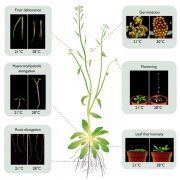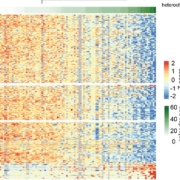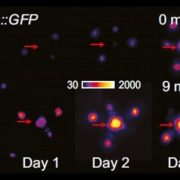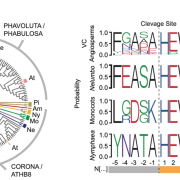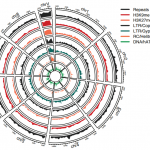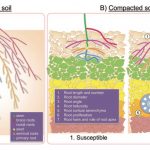Review: An evolutionary history of genes controlling carpel development (COPB)
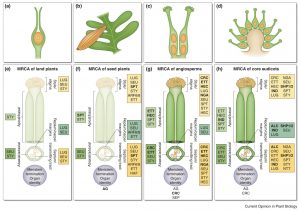 Carpels, the female reproductive structures in angiosperms, are the most complex organs in plants. Most of the current knowledge about the molecular mechanism underlying carpel development derives from Arabidopsis. In a new review, Becker summarizes recent studies about the reconstruction of ancestral carpels. Through phylogeny analysis, the lineages of genes and modules within the Arabidopsis Gene Regulatory Networks (GRN) can be traced through the evolution of plants. This strategy allows the identification of ’old’ and ‘young’ genes, sometimes related to morphological or developmental features. The author proposes the carpel GRN of the most recent common ancestor (MRCA) of land-plants, seed-plants, angiosperms, or core eudicots. Some genes that have prominent roles during carpel development are present in all land plants, for instance, SEUSS, LEUNIG, and STYLISH genes (involved in the regulation of auxin biosynthesis). Genes controlling meristem determinacy and carpel identity (such as AGAMOUS and SEPALLATA), can be detected in the MRCA of seed plants. In this case, the auxin signaling network becomes more complex with the addition of some ARF (ETTIN), and bHLH transcription factors, such as SPATULA. The origin of angiosperms marks the origin of essential genes involved in tissue polarity (CRABS CLAW) and genes that participate in the formation of style and stigma (NGATHA). Finally, some other genes are present only in core eudicots, i.e., INDEHISCENT and ALCATRAZ controlling the development of the dehiscence zones in the fruit. The author also discusses how these proposed GRNs of ancestral carpels can help our understanding of the origin of this reproductive structure. (Summary by Humberto Herrera-Ubald0) Curr. Opin. Plant Biol. 10.1016/j.pbi.2019.08.009
Carpels, the female reproductive structures in angiosperms, are the most complex organs in plants. Most of the current knowledge about the molecular mechanism underlying carpel development derives from Arabidopsis. In a new review, Becker summarizes recent studies about the reconstruction of ancestral carpels. Through phylogeny analysis, the lineages of genes and modules within the Arabidopsis Gene Regulatory Networks (GRN) can be traced through the evolution of plants. This strategy allows the identification of ’old’ and ‘young’ genes, sometimes related to morphological or developmental features. The author proposes the carpel GRN of the most recent common ancestor (MRCA) of land-plants, seed-plants, angiosperms, or core eudicots. Some genes that have prominent roles during carpel development are present in all land plants, for instance, SEUSS, LEUNIG, and STYLISH genes (involved in the regulation of auxin biosynthesis). Genes controlling meristem determinacy and carpel identity (such as AGAMOUS and SEPALLATA), can be detected in the MRCA of seed plants. In this case, the auxin signaling network becomes more complex with the addition of some ARF (ETTIN), and bHLH transcription factors, such as SPATULA. The origin of angiosperms marks the origin of essential genes involved in tissue polarity (CRABS CLAW) and genes that participate in the formation of style and stigma (NGATHA). Finally, some other genes are present only in core eudicots, i.e., INDEHISCENT and ALCATRAZ controlling the development of the dehiscence zones in the fruit. The author also discusses how these proposed GRNs of ancestral carpels can help our understanding of the origin of this reproductive structure. (Summary by Humberto Herrera-Ubald0) Curr. Opin. Plant Biol. 10.1016/j.pbi.2019.08.009



